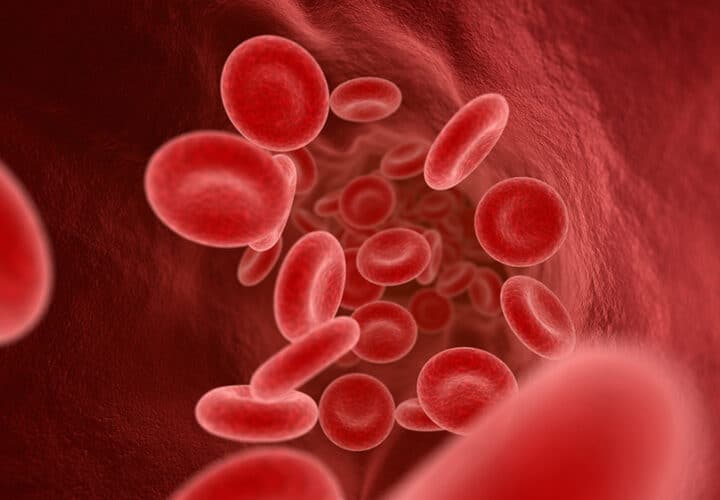Alzheimer's biomarker deep dive: What causes amyloid plaque build-up in the brain? And is it reversible — or preventable?
We’ll get to the important question of beta-amyloid plaque build-up, but first, the basics: What is beta-amyloid protein, what does beta-amyloid do in the brain? The amyloid-beta precursor protein (APP) is a protein that exists in all humans’ bodies: This large membrane protein is thought to play an essential role in growth and repair of neural cells in the brain. Enzymes in the brain break up and release smaller elements of APP, including beta-amyloid. Now, anyone who’s been through the diagnostic process for Alzheimer’s has likely heard about beta-amyloid, and in particular, beta-amyloid plaques: clumps of this protein that appear on a brain scan and spell out the possibility of Alzheimer’s disease.
What is amyloid plaque?
Beta-amyloid plaque accumulates in the brain of people with Alzheimer’s disease and other forms of dementia. These icky little clumps stick together outside the brain’s nerve cells — and they’re thought to contribute to the death of these cells, leading to memory loss, cognitive decline and other symptoms associated with Alzheimer’s disease.
At least, that’s one theory: There’s an ongoing debate about the role of beta-amyloid plaques in Alzheimer’s disease and related dementias: Do these beta-amyloid plaques cause neurodegeneration and cognitive decline? The amyloid hypothesis says so. Or: Are these plaques just a symptom? Some even theorize it might be part of the body’s response in trying to fight Alzheimer’s.

What proteins build up in the brain in Alzheimer’s disease?
Here’s another twist: Beta-amyloid isn’t the only protein that builds up in the brains of people with Alzheimer’s. During the disease’s diagnostic process, clinicians will also look at brain scans for neurofibrillary tangles of a protein called tau.
Both neurofibrillary tangles and amyloid plaques are thought to contribute to the decline in cognitive function and other symptoms seen in Alzheimer’s disease. But, the exact relationship between these two structures is not yet fully understood.
And then, scientists are discovering, the list doesn’t end there. Yet other problematic proteins — like TDP43 for example — can also start sticking together and eventually lead to damage and cell death in the brain.
Why does beta-amyloid build up in the brain?
One theory is that beta-amyloid builds up in the brain because the protein malfunctions. This abnormal processing or “misfolding” could be caused by a variety of things, including changes in the levels of enzymes that regulate the breakdown of APP, changes in the levels of other proteins that help regulate APP, and oxidative stress.
This is why some scientists are researching hormones and other interventions that help fight oxidative stress. But there’s still a lot to learn about why beta–amyloid malfunctions and starts clumping up.
Scientists are also studying the roles of sleep, diet, genetics, age and other factors in the buildup — and the prevention — of beta-amyloid plaque in the brain.
Genetics
The presence of certain genetic mutations can increase a person’s risk of developing Alzheimer’s disease, which is characterized by the accumulation of amyloid plaques in the brain.
While certain genes can play a role in increasing a person’s risk of developing Alzheimer’s, only a small portion of cases are due to inherited genetic mutations. The majority of Alzheimer’s cases are sporadic and the exact cause is not known, but it is believed to be a complex interplay of genetic, environmental, and lifestyle factors. In some families, multiple family members may develop Alzheimer’s disease, suggesting a genetic component, but more research is needed to understand the exact mechanisms involved.
Age
Age is a known risk factor for the development of amyloid plaque buildup in the brain, which is a hallmark of Alzheimer’s disease. As we age, the levels of amyloid proteins in the brain can increase, leading to the formation of plaques that can disrupt communication between nerve cells and eventually lead to brain cell death and cognitive decline. However, it’s important to note that not all older adults develop Alzheimer’s.Amyloid plaque can start to form in the brain of some individuals during mid-life, but it is not typically seen in the brains of newborns or infants.
Strangely, there have been studies that have identified the presence of amyloid plaque in the brains of infants. However, the significance of this presence and its potential link to Alzheimer’s disease is not yet fully understood and remains an area of ongoing research.
Diet
There is currently no evidence to suggest that certain foods can directly reduce amyloid levels in the brain. Meanwhile, amyloid is not found in food.
Environmental factors
Environmental factors like air pollution have been studied for their potential impact on amyloid buildup in the brain. Some studies have suggested a link between exposure to air pollution and an increased risk for developing Alzheimer’s disease and other forms of dementia, but the evidence is still inconclusive and more research is needed to determine the extent of this link. The mechanisms by which air pollution might contribute to amyloid buildup are not well understood, but it is thought that pollution exposure might cause oxidative stress, inflammation, and other changes in the brain that could promote the accumulation of amyloid.

Beta-amyloid as a brain health defense mechanism
As mentioned earlier, some scientists also theorize that beta-amyloid builds up in the brain not because it’s broken, but because it’s actually trying to help protect the brain. This idea builds on a growing body of research: Some scientists are taking it one step farther, looking into whether increasing the levels of this protein could treat Alzheimer’s.
Bruno Imbimbo, a researcher and Alzheimer’s drug developer at the pharmaceutical company Chiesi Farmaceutici, recently wrote a provocative editorial in the journal Pharmacological Research, discussing this possibility.
Considering a long list of failed Alzheimer’s drugs, Imbimbo points to a class of drugs called secretase inhibitors, which prevent beta-amyloid from being produced in the first place. He points out that, when tested against Alzheimer’s, these drugs actually appeared to worsen cognitive performance.
“Both g-secretase and b-secretase inhibitors, which strongly inhibit amyloid-beta production, worsen cognitive and clinical performance in early and late stages of Alzheimer’s disease,” he told Being Patient. “B-secretase inhibitors have been shown to worsen cognitive performance even in unimpaired participants at risk of developing Alzheimer’s disease.”
Instead of clearing beta-amyloid, he said, treatments for Alzheimer’s disease may need to increase the amount of this “good” beta-amyloid in the brain.
Are amyloid plaques in the brain preventable — or reversible?
Can you stop plaques from forming?
There is no surefire way to prevent amyloid plaque buildup in the brain. That said, maintaining a healthy lifestyle and engaging in activities that have been shown to promote brain health — like exercising, eating a balanced diet, getting enough sleep, and engaging in mentally stimulating activities — can help to reduce the risk of developing neurodegenerative diseases like Alzheimer’s.
Further, reducing exposure to risk factors such as air pollution and smoking, and managing chronic health conditions, such as diabetes and high blood pressure, may also play a role.
Diet
Again, diet has not been definitively shown to effect the buildup of amyloid plaques in the brain. That said, some research suggests that healthy diets like the Mediterranean Diet and the MIND diet — diets rich in fruits and vegetables, whole grains, and low in sugars, saturated and trans fats — help support brain health, reducing the risk of cognitive decline and Alzheimer’s. It’s tough to link diet to Alzheimer’s, but a healthy diet also addresses Alzheimer’s and dementia risk factors from diabetes to obesity to vascular issues to high cholesterol — the list goes on.
Exercise
Exercise has been shown to have a positive impact on brain health, including reducing the risk of Alzheimer’s disease. Some studies suggest that regular physical activity can reduce the accumulation of amyloid plaque in the brain.
Exercise may also have beneficial effects on other factors that contribute to the development of Alzheimer’s, such as inflammation, oxidative stress, and insulin resistance.
Can you get rid of beta-amyloid plaques?
Anti-amyloid monoclonal antibody drugs, such as Aduhelm and Leqembi, and a number of other monoclonal antibody drugs in the clinical trials and FDA approval pipelines, are being designed target beta-amyloid plaques in the brain and clear it out.
The goal of these drugs is to help clear these plaques from the brain in order to slow down or halt the progression of Alzheimer’s. Other drugs, including existing, FDA-approved insomnia medications, are being tested for their ability to accomplish the same goal.
‘Does beta-amyloid build-up in the brain mean I have Alzheimer’s?’
Not everyone with Alzheimer’s disease has amyloid plaques in their brain, but they are a hallmark of the disease and are present in most people with Alzheimer’s. However, the presence of amyloid plaques alone does not guarantee that a person will develop Alzheimer’s, and some people can have amyloid plaques in their brain without developing the disease. Additionally, amyloid plaques can be found in the brains of individuals with other forms of dementia, such as Lewy body dementia. The bottom line: Beta-amyloid plaques in the brain don’t necessarily guarantee a person has Alzheimer’s.





Ok…since amyloid plaque is not necessarily present in some Alzheimer’s patient…why then, do they think it is the culprit?
Think back 50 years. The diet in the west was high in saturated fats like bacon, sausage, red meat, and of course fried foods. Nearly all dinner meals had something fried. So a saturated fat diet doesn’t seem to be the culprit for dementia. I don’t see a correlation. Soft drinks until recently had sugar. High Fructose Corn Syrup is new to the scene. Same with GMO, plastic containers, round-up, and artificial sweetners. Compare of diet 50 years ago in the west to now. Some say, no connection between Alzheimers and diet so we spend billions guessing about plaques, tau, and viruses and get nowhere. Look at the places around the world with low incidents of dementia and note the food supply changes in the west over the past 50 years compared to places with few cases of dementia. Suppose the cause of dementias are related to changes in the food supply. The real question becomes how do we detoxify the effects of the past two decades? Is it even possible?
First find the real cause of it.Then stop taking it food water ect you mentioned Oxidative stress then isaid Pollution exposure might iinflammation .Causes now for the solution Levels? of Protein what do you think facts facts and more focus thanks